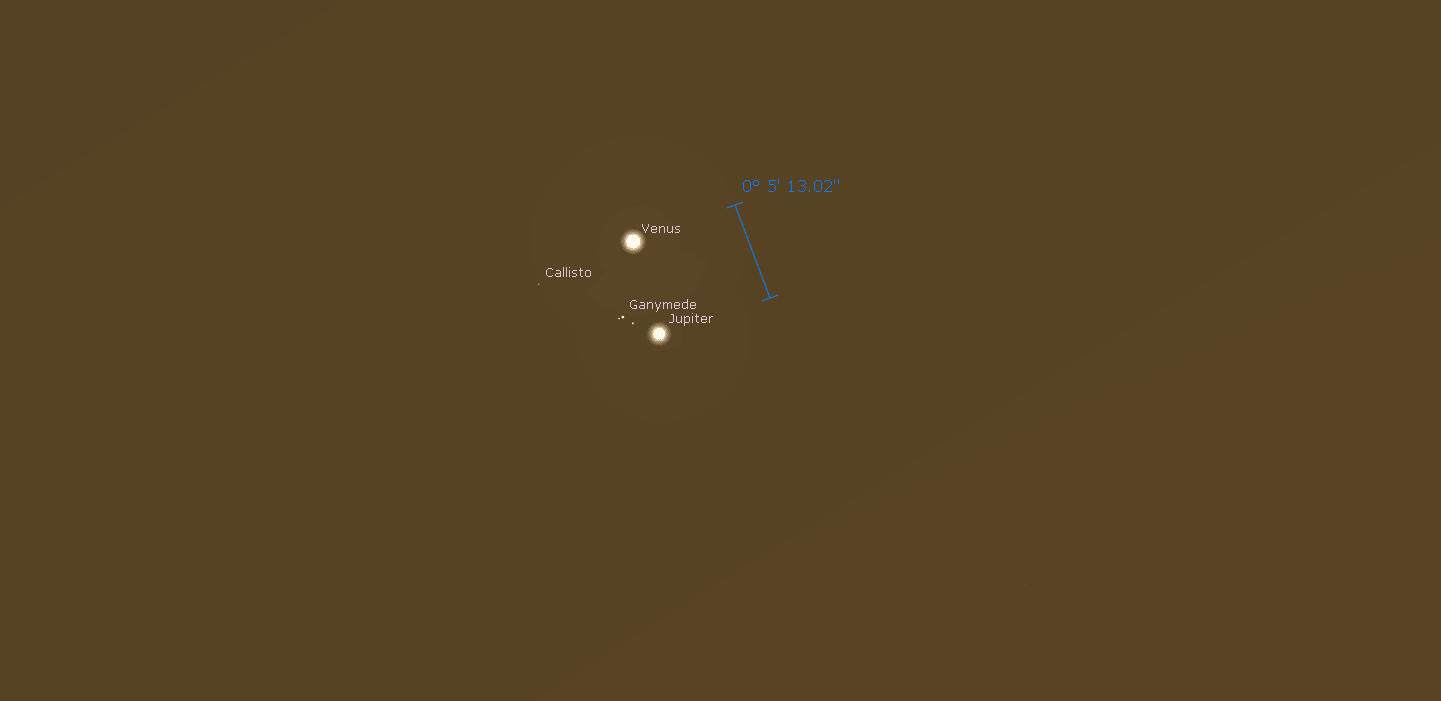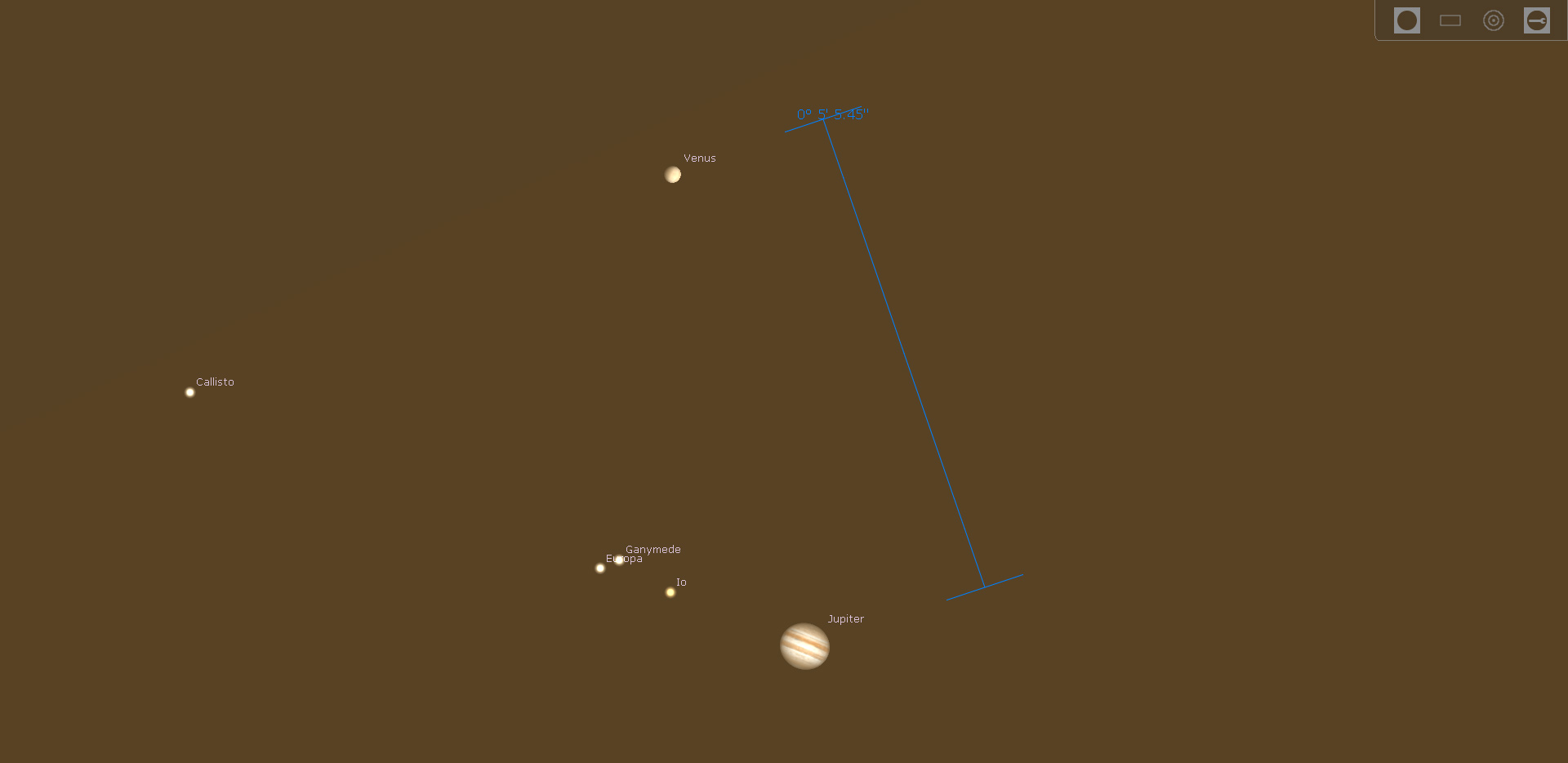
Venus and Jupiter Appear to Merge
August 2016 :
Note: This article may contain outdated information
This article was published in the August 2016 issue of The Skyscraper and likely contains some information that was pertinent only for that month. It is being provided here for historical reference only.
You may have noticed bright Jupiter moving closer to the western horizon after sunset during the last few weeks. Eventually it will be too close to the Sun in our sky to be seen. But before it disappears into the solar glare, the planet Venus will rise above the western horizon and appear to merge with Jupiter. To most eyes the pair will look like one brilliant object on the evening of August 27. The two planets will be a mere 4 arc minutes apart. (A Full Moon is 30 arc minutes in diameter.) So this is a very close planetary encounter.
However, you will need an absolutely dead horizon to be able to see this event, since Jupiter and Venus will be about three degrees due west off the horizon.
Should you have access to a good observing site binoculars will enhance your view. But if you have even a small telescope, a low magnification eyepiece will show both planets in the same field of view. Jupiter’s four Galilean moons will be visible to one side of the planet, and Venus’ disk will appear 93% illuminated, looking like a waxing gibbous Moon phase.
The experience will be well worth your efforts.
Jupiter will then soon be lost to view, but Venus will continue to move higher into the sky as the days progress and will be a beacon in the western sky for months to come.




